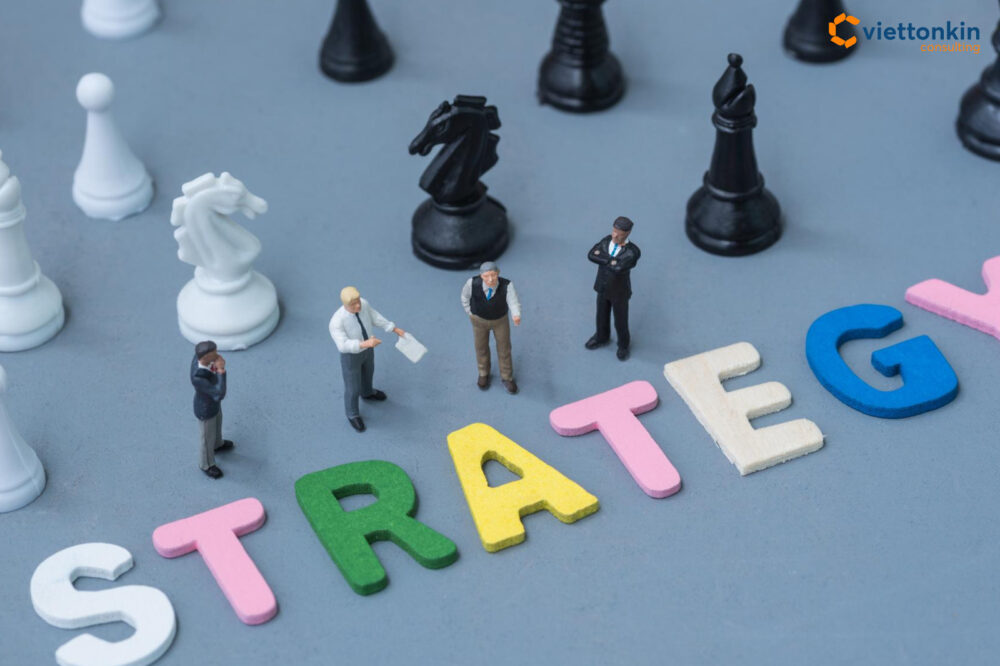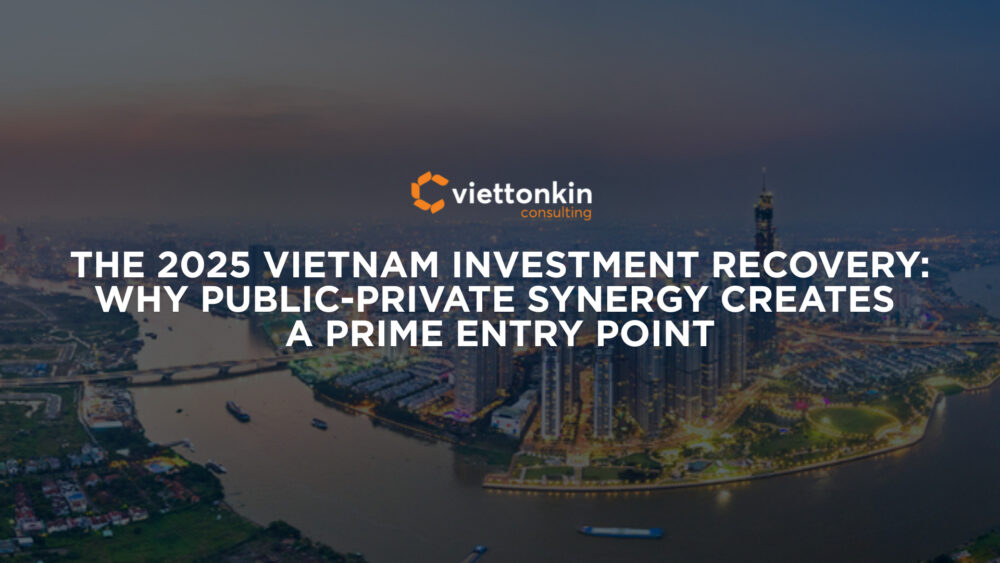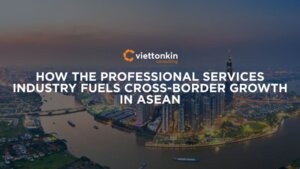Vietnam's rising middle class and strong demand for quality early education have created a fertile market for kindergarten franchising. However, many foreign investors are deterred by complex licensing procedures and regulatory uncertainty. Vietnam's legal framework is highly attractive, permitting 100% foreign ownership of preschools. On the other hand, the primary challenge lies in combining the […]
In a global landscape where investors are searching for stable, high-growth markets, Vietnam's current investment environment presents a compelling case study. The nation is not just recovering; it is undergoing a structured resurgence powered by a rare and powerful synchronization of government-led public investment and robust foreign direct investment.
This dynamic creates a uniquely favorable climate for foreign capital, making the ongoing Vietnam investment recovery a critical moment to understand.
This analysis will deconstruct the key drivers behind this "twin-engine" growth, explore the emerging sectoral opportunities, and outline actionable strategies for investors looking to capitalize on this momentum.
Key Takeaways:
- Synchronized Growth: Vietnam is experiencing a "twin-engine" recovery driven by both accelerated public spending on infrastructure and surging foreign direct investment (FDI).
- Strong Public Investment: Public investment disbursement in the first nine months of 2025 was significantly higher than the previous year, with a strong focus on transport, digital transformation, and energy.
- Robust FDI Inflows: FDI from the private sector continues to pour in, with inflows topping US$28.54 billion within nine months of 2025, led by partners like Singapore, China, and Hong Kong.
- Fiscal Stability: With a public debt-to-GDP ratio under 40%, Vietnam maintains significant fiscal headroom, ensuring stability and capacity for future investment.
- Improved Investment Environment: The government's focus on digital transformation, simplified Public-Private Partnership (PPP) frameworks, and transparent governance is actively strengthening investor confidence.
Vietnam Investment Recovery And GDP Growth Driven By Public And Private Capital

A clear indicator of a market’s potential is the alignment of public policy with private capital flows. In 2025, Vietnam is demonstrating this alignment perfectly, creating favorable conditions for business and investment.
Public investment accelerates nationwide boosting economic recovery
The government's commitment to stimulating the economic recovery is clear and measurable. According to the Ministry of Finance’s Report No. 528/BC-BTC (2025), public investment disbursement reached VND 440,402.3 billion in the first nine months of 2025, achieving 53.3% of the plan assigned by the Prime Minister. This disciplined execution is further evidenced by the fact that nine ministries and seventeen localities achieved disbursement rates at or above the national average.
Compared to the same period last year, this represents a significant increase, rising by 4.5 percentage points in disbursement rate and VND 132,564.6 billion in absolute value. The momentum was building steadily, as The Saigon Times (2025) reported that disbursements had already reached 39% of the full-year plan by the end of July, 2025.
Foreign investors reinforce momentum through rising FDI inflows
The private sector is responding forcefully to these positive public signals. According to VOV World (2025), FDI inflows surged to over US$28.54 billion within nine months of 2025 alone, a year-on-year increase of over 15.2%.
Urban centers are magnets for this capital; for example, Hanoi attracted US$15.4 billion in FDI disbursement in the first eight months of 2025. The primary sources of this investment underscore the confidence of major regional companies in Vietnam’s sustained growth trajectory and improving investment environment.
Why synchronized capital flows matter for sustainable GDP growth
This convergence of public investment and private capital is crucial for the ongoing Vietnam investment recovery. Public spending directly "crowds in" private investment, creating a multiplier effect that drives GDP growth.
This stable foundation allows both private enterprises and state-owned enterprises to thrive, as Vietnam’s low public-debt ratio ensures it can continue investing in national priorities without compromising macroeconomic stability.
Policy Stability And The National Assembly’s Role In Strengthening Investor Confidence
Beyond the numbers, the driver of this momentum is a stable policy environment. The Vietnamese National Assembly has been proactive in refining legal frameworks to build trust and reduce friction for investors. This fiscal prudence is a cornerstone of investor security and enhances the nation's overall competitiveness.
The National Assembly has also been pivotal in modernizing the landscape, with digitized platforms cutting approval times for enterprises by an estimated 30–50%.
Emerging Sectors Shaping Vietnam’s Digital And Economic Transformation
The capital flowing into Vietnam is being channeled into high-potential sectors. For foreign investors, aligning with these national priorities is the fastest route to success.
- Infrastructure Upgrades: Massive public spending is fueling significant upgrades in transport and logistics. Key industrial corridors linking Hanoi to HCM City are enhancing the national supply chain.
- Green Manufacturing and Smart Logistics: FDI is shifting towards sustainable industries. There is a surge of interest in renewable energy projects and improvements to the manufacturing supply chain.
- Digital and Technology Transformation: Vietnam’s push for e-government is creating fertile ground for tech-driven investments. The fintech and automation sectors are seeing rapid growth, with a focus on technology transfer to improve local capabilities.
Key Challenges To Monitor
Despite the strong momentum, some bottlenecks persist. Key issues for foreign investors include administrative inconsistencies between central and provincial authorities, which can cause project delays, and potential infrastructure capacity limits as development accelerates.
Navigating these complexities with experienced local expertise remains crucial for mitigating risks and ensuring project success.
Turning The Vietnam Investment Recovery Into Actionable Strategies

Understanding the macro trends is the first step. The next is to convert that knowledge into a concrete market-entry strategy with thorough market research.
Align investments with national GDP growth priorities
The most successful private firms are those who align their strategies with the 2025 public-investment plan. Focus on sectors receiving the most funding and policy support: infrastructure, digital transformation, and green energy.
Strategic entry options in HCM City and emerging industrial zones
Geographic location is critical. While major urban centers remain key, emerging industrial zones around HCM City offer competitive advantages. A key challenge to address, however, is the difficulties in choosing a location, risks in renting and using land, which are difficult according to Vietnam laws, which requires a robust legal strategy.
Conclusion: Seizing the Momentum In A Transformative Decade Ahead
Vietnam's twin-engine recovery, powered by synchronized public investment and robust foreign capital, signals a transformative decade ahead. The country’s ample room for expansion and stable macroeconomic conditions ensure this growth is not a short-term trend but a long-term opportunity.
Viettonkin Consulting’s regional experience and 15-year record in cross-border consulting make it the strategic partner for investors looking to convert Vietnam’s investment recovery into sustainable success.
Frequently Asked Questions
Which sectors offer the best opportunities for FDI in Vietnam right now?
Based on current capital flows, the most promising sectors are green manufacturing, technology, and advanced infrastructure. These areas benefit from both strong public investment and clear policy incentives, contributing to the country’s strong position in global markets.
What is a realistic timeline for setting up a foreign-invested enterprise in Vietnam?
For a standard company, the timeline typically ranges from 3 to 6 months. For complex projects in regulated sectors like finance or energy, the process can extend to 9-12 months. Experience shows that thorough preparation is key to accelerating this timeline for private enterprises.
How can foreign investors navigate inconsistencies between central and provincial regulations?
This is a common challenge that requires localized expertise. The key is to engage a partner with strong relations at both the national and provincial levels. Proactive dialogue is critical for resolving discrepancies and ensuring smooth project execution for international business.You may also like: Vietnam’s Public Investment Push: A New Legal Era Begins in 2025












